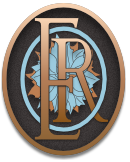Most of San Diego’s palm trees are classified as Canary Island date palm trees. But Canary Island date palms also are a favorite snack of the South American palm weevil, a type of beetle that first made its presence known in Southern California in 2011. Once a palm weevil attacks a tree, the tree begins to show signs of disease, such as brown, drooping fronds.
At this point, according to experts, it’s most likely too late to salvage the tree.
The weevil has been slowly working its way north from the Baja peninsula, where it was first discovered around 2000.
Dead trees look like “giant brown umbrellas” or “big brown mushrooms” because the dead fronds turn brown and hang from the top of the tree trunk.
The community has lost several of these large majestic trees in the past few years and they have been removed. Due to the nature of the damage another tree of the same species cannot be replaced in the same spot.
We urge homeowners to work with an arborist to assess the health of any large palm trees that they may have to inspect for disease and pests. Even the removal of a large palm tree is very expensive so staying ahead of disease and pests is money well spent.

